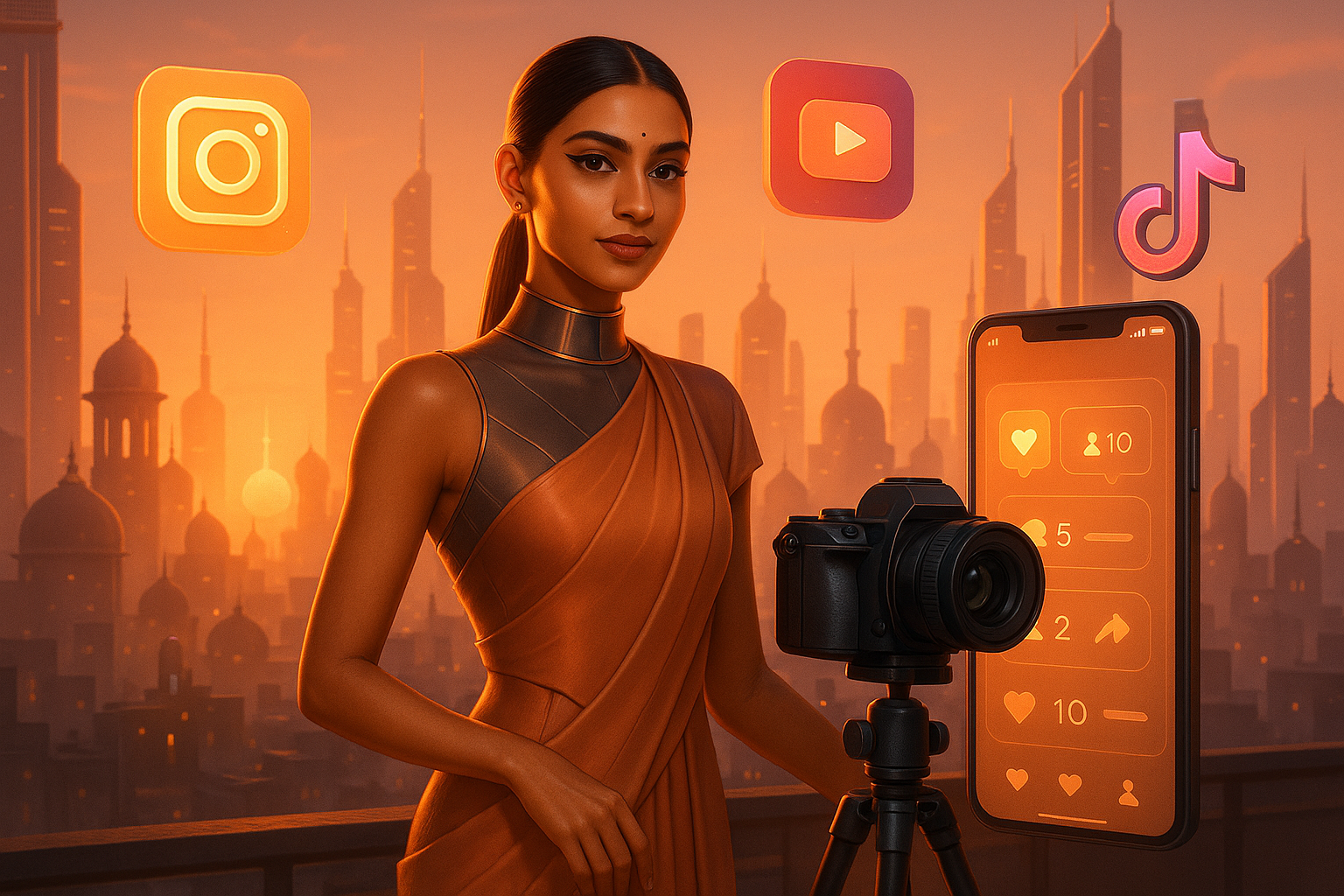In the ever-evolving landscape of digital marketing, micro-influencers have emerged as silent disruptors. As brands struggle with declining engagement on traditional influencer campaigns and skyrocketing costs, the micro-influencer model creators with 10,000 to 100,000 followers is proving to be a more authentic, budget-friendly, and high-performing alternative. In 2025, this shift is more evident than ever.
Who Are Micro-Influencers?
Micro-influencers are content creators who have cultivated a loyal niche following. Unlike celebrities or macro-influencers, their audience tends to be highly engaged and often views the creator as a trusted peer rather than a distant figure. These influencers typically focus on specific industries or interests fashion, travel, tech, wellness, finance and build meaningful conversations with their followers.
Why Are Brands Turning to Micro-Influencers?
- Higher Engagement Rates
Studies show that micro-influencers generate engagement rates up to 60% higher than macro-influencers. Their followers are more likely to trust their recommendations, comment on their posts, and even share their content. - Cost-Effective Campaigns
Collaborating with a micro-influencer costs significantly less than a mega-influencer partnership. This allows small and mid-sized businesses to invest in influencer marketing without breaking the bank, and even big brands are now preferring to work with 10 micro-influencers instead of one big name. - Authenticity Over Glamor
2025’s consumers are value-driven and increasingly skeptical of overly polished influencer content. Micro-influencers often share unfiltered, behind-the-scenes glimpses into their lives, making them more relatable and trustworthy. - Niche Targeting
A pet brand collaborating with a pet-parenting influencer or a tech startup tying up with a gadget reviewer ensures that their message reaches a highly relevant audience. Micro-influencers excel at niche targeting.
Successful Micro-Influencer Campaigns in 2025
- MamaEarth collaborated with over 300 mom-influencers across India in Q1 of 2025 to promote their new baby care range, resulting in a 40% increase in regional sales.
- Zomato leveraged city-based foodies to launch its hyperlocal delivery campaign in smaller towns.
- boAt ran a viral “Sound of the Streets” series with indie musicians and audiophiles on Instagram and YouTube Shorts, each having fewer than 50k followers.
The Rise of Regional Micro-Influencers
One of the biggest game-changers in 2025 is the rise of vernacular and regional micro-influencers. Platforms like Moj, Josh, and YouTube Shorts have enabled creators from Tier 2 and Tier 3 cities to reach local audiences effectively. These creators often speak in regional languages, increasing relatability and trust in their communities.
Brands like Flipkart, Paytm, and Swiggy have launched dedicated influencer campaigns in cities like Lucknow, Jaipur, Indore, and Surat, targeting audiences through these hyperlocal creators.
How to Choose the Right Micro-Influencer for Your Brand
- Check Engagement, Not Just Followers
Look for influencers who have consistent likes, comments, and genuine interactions. - Audience Demographics
Ensure the influencer’s audience matches your target market in terms of age, location, and interests. - Content Style
Match the influencer’s content tone with your brand voice. An overly quirky creator may not suit a luxury brand, and vice versa. - Past Collaborations
Review their past brand partnerships and assess how their audience reacted. Transparency matters.
Platforms Dominating Micro-Influencer Marketing
- Instagram: Reels and Stories remain the go-to formats.
- YouTube Shorts: Growing rapidly, especially among tech, fitness, and educational influencers.
- LinkedIn: A surprising new platform for B2B micro-influencers, especially in finance, entrepreneurship, and HR.
- X (formerly Twitter): Still strong for opinion-based influencers and breaking trends.
Future Trends in Micro-Influencer Marketing
- AI-Powered Matching Tools: Tools like HypeAuditor and Qoruz are making it easier for brands to find the perfect micro-influencer based on data.
- Performance-Based Collaborations: More brands are moving towards pay-per-click or commission-based campaigns with influencers.
- UGC Integration: Brands are repurposing influencer content for ads, reels, and website testimonials.
Conclusion
As digital marketing continues to evolve in 2025, micro-influencers are no longer just a “budget” alternative they are a strategic asset. Their relatability, trust factor, and niche expertise allow brands to foster deeper connections with audiences. Whether you’re a startup or a corporate giant, now is the time to go micro.







